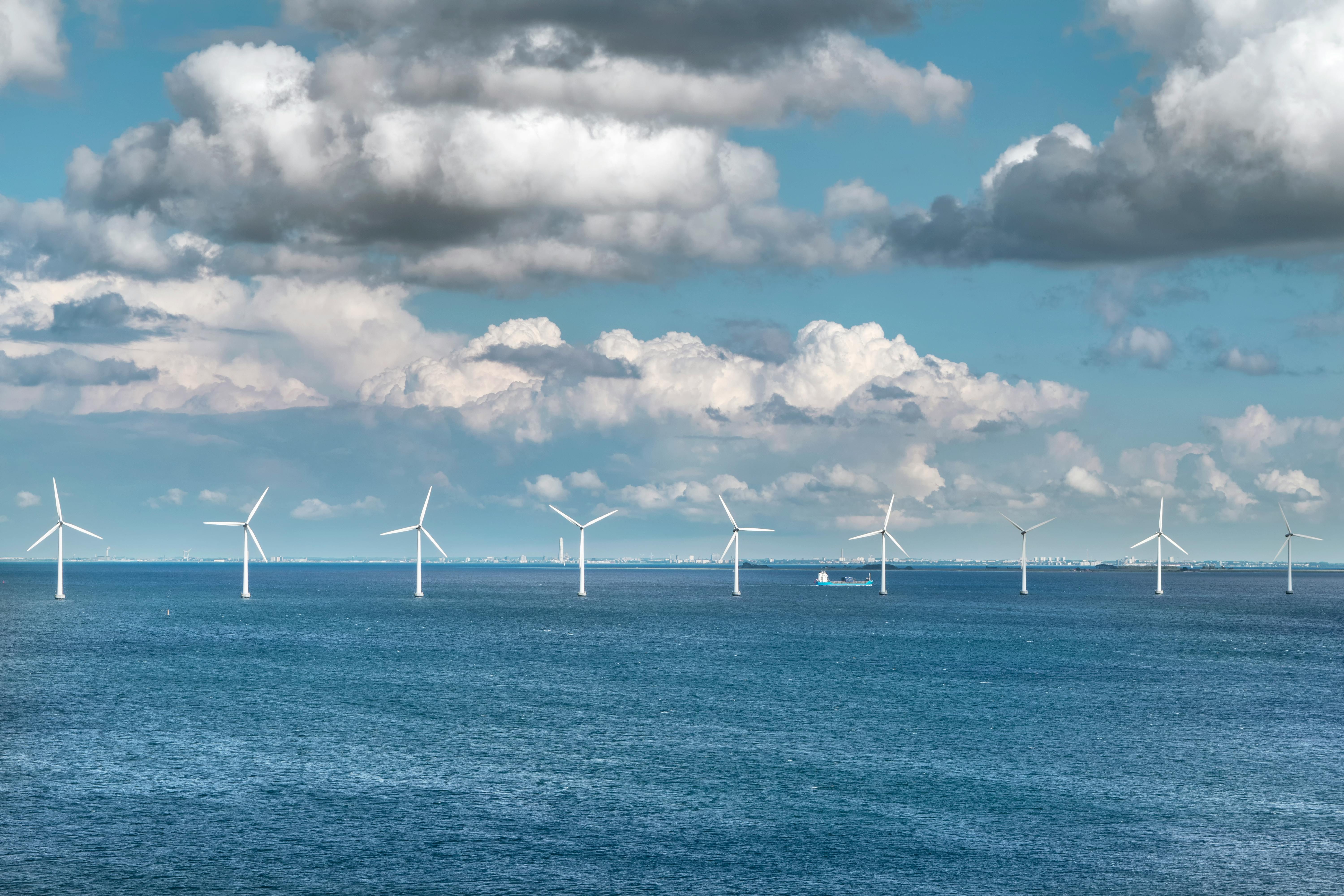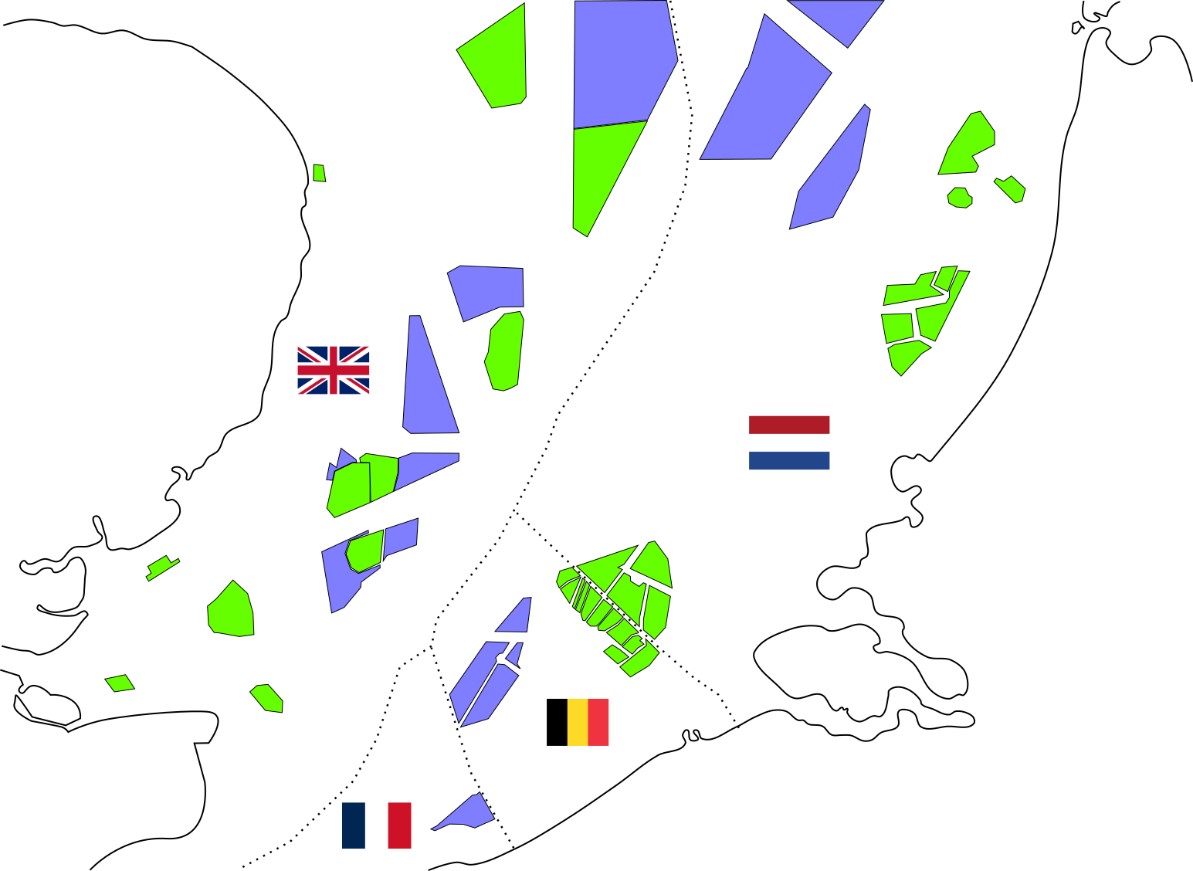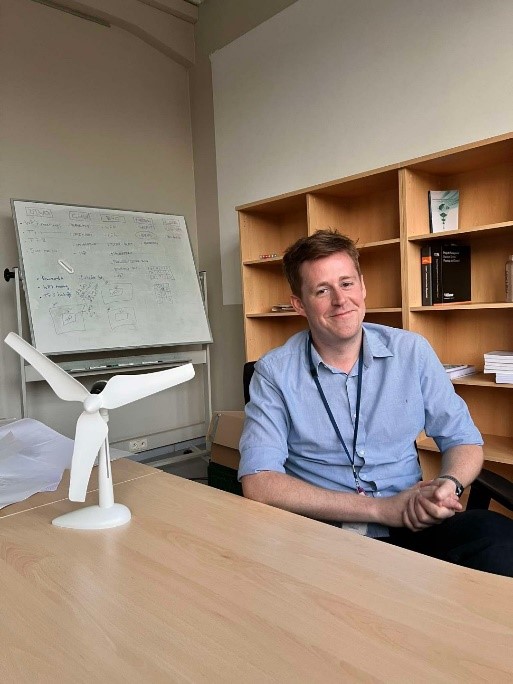User Story Taming the Wind: Reducing Wake Uncertainty between Offshore Wind Farms with Supercomputing

Wim Munters is Assistant Professor at the von Karman Institute for Fluid Dynamics (VKI) [1], where he leads the activities of VKI Team Wind. The team performs research on wind tunnel testing, field experiments, and numerical simulations of atmospheric flows with wind energy as the main application. The focus is on offshore wind farms, which are becoming increasingly common.
Wim Munters (VKI): “Belgium currently has approximately 2.2 gigawatts of offshore wind energy installed, annually producing the equivalent of the electricity consumption of about 2 million Belgian households. In total, the European seas host about 37 gigawatts of offshore wind capacity today [2]. However, we expect significant growth in this sector, with current projections [3] indicating Europe to reach 84 gigawatts by 2030—more than doubling today’s installed capacity. To establish a truly net-zero and sustainable electricity system, European ambitions are to increase capacity to at least 360 gigawatts [4] of offshore wind by 2050. This goal represents a substantial increase, almost ten times the current capacity. This is the ambitious plan moving forward.”
Although offshore wind farms are subjected to harsh weather conditions, one major advantage of these wind turbines is that the wind resource is much better offshore than onshore. Wind speeds are generally higher and more consistent over the sea, which is crucial since this wind is the key driver of this kind of renewable electricity generation. Additionally, for densely populated countries like Belgium, offshore wind farms can be developed in areas that are far from residential neighbourhoods, relieving the complexity and social constraints associated with constructing onshore wind turbines in populated areas.

Wakes: The Hidden Challenge of Growing Offshore Wind Farms
The primary purpose of constructing wind turbines and wind farms is to harness energy and generate electricity by extracting energy from the atmosphere. When energy is taken from the wind, it creates a region with lower energy and reduced wind speeds in the wake behind the turbines. This wake continues to flow through the wind farm, affecting the turbines located downstream. As a result, the turbines positioned at the front of the wind farm can diminish the wind resource available to those further down the line. Furthermore, wakes can also have impacts on other wind farms.
Wim Munters (VKI): “Wakes within individual wind farms, so-called internal wakes, have been studied and quantified in energy production estimates for a long time. However, these wakes can also persist over much longer distances depending on the atmospheric conditions, and eventually affect neighbouring wind farms, leading to external wake impacts. In Belgium, due to a limited amount of space available, we have wind farms that are in close vicinity and have a high internal turbine density, resulting in significant internal and external wake impacts already today. With plans for future new wind farms in the region, external wakes from these developments are important to quantify. Also at the European scale, with the anticipated increase in offshore wind farms, it is important to include external wakes from existing wind farms and (potential) future developments nearby in energy production estimates during all stages of the wind farm lifetime, from planning to decommissioning. However, reducing uncertainties on long-range external wake impacts requires more sophisticated models than those typically used in industry. This is where the expertise of VKI Team Wind comes in. Our research revolves around quantifying and optimising complex interactions between wind farms and the atmosphere over different temporal and spatial scales, accounting for multiple uncertainties and scenarios.”
How High-Performance Computing Accelerates Wind Energy Research
To analyse the impact of wind farms on one another and on the atmosphere, Wim’s team uses a range of different models also including numerical weather models, specifically the WRF model [5]. Although this model can run faster than real-time on high-end workstations and clusters for forecasting purposes, accurately capturing this impact requires many model runs over time horizons of multiple years. The resulting computational demand exceeds the capacity of their in-house resources, including the High Performance Computing (HPC) cluster owned by VKI. Using modern large-scale HPC infrastructure enables the exploration of more scenarios, testing of various model configurations, and assessment of longer timeframes, all while maintaining a reasonable time-to-solution.
Wim Munters (VKI): “By using large-scale HPC infrastructure such as the Flemish Tier-1 system, we are able to greatly reduce the time-to-solution in two ways. Firstly, we split the long-time horizons of our simulations (years) into shorter batches (weeks) that can be run concurrently in separate jobs. Secondly, each of these jobs is further parallelized on multiple nodes while retaining a high efficiency. In this way, simulations that would take up to eight months on our in-house infrastructure (or over ten years on a modern 8-core laptop) can be performed in roughly two weeks.”
How Better Wake Modeling Drives Smarter Wind Farm Planning
In the past decade, there has been a growing awareness of reduced power generation caused by wakes. It is now widely accepted that these wakes, internal and external, are a major factor contributing to power losses, which can reach up to 20% in densely spaced farms, such as those in Belgium. Recently, with the ongoing development of very large offshore wind farms, attention has also turned to the interactions at longer distances between farms. Different wind farms are typically owned by multiple operators who may not consider the impact of their locations on one another. Consequently, if a new wind farm is established upstream in the dominant wind direction, it creates uncertainty on the wind resource for existing farms. Thus, understanding these interactions is crucial; improved insights can lead to better farm placement, control techniques to mitigate wake effects, and more accurate revenue estimates over a wind farm's lifespan.
Wim Munters (VKI): “Our simulations have enhanced our understanding of how wind farms interact with both the atmosphere and each other. Specifically, we examine the atmospheric conditions under which wake effects are likely to persist over long distances. These scientific insights are crucial for existing, future, or even repowered wind farms; even slight power losses due to wake effects, amounting to just a few percentage points, can significantly impact the return on investment for these capital-intensive projects.”
New wind farms are also generally two to three times larger than the existing ones. These larger farms are expected to interact with the lower levels of the atmosphere and influence regional weather patterns. Currently, the effects of these interactions are not yet fully understood, raising numerous questions about the efficient operation, planning, and design of offshore wind farms.
Wim Munters (VKI): “Our research supports the efficient exploitation and design of offshore wind energy, as the most promising sustainable electricity generation technology with important societal impacts. To achieve the energy transition ambitions, it is important to continue installing large offshore wind farms. We strongly advocate the use of different models to quantify impacts and uncertainties of wake effects throughout the lifetime of an offshore wind farm, including at the project planning stage. For Belgium, these impacts are particularly relevant, as we plan to install a very large new wind farm cluster in the Princess Elisabeth Zone, approximately 30 kilometres upstream (Southwest) of the existing wind farms. Combined, these farms will form one of the largest high density wind farm clusters in the world, making them a very relevant case for wake-weather-power interaction modeling. Large-scale HPC infrastructure, such as provided by the Vlaams Supercomputing Centrum, really helps us to model this in both national research projects, such as CORE and Cloud4Wake (funded through VLAIO and De Blauwe Cluster), and European projects, such as DTWO (funded through Horizon Europe).”

Vlaams Supercomputing Centrum Powering the Future of Wind Energy Research
Wim Munters (VKI): “Our simulations help us to improve the exploitation and development of sustainable and green electricity from wind energy. Using the supercomputing infrastructure of Vlaams Supercomputer Centrum (VSC) allows us to obtain a reasonable time-to-solution for large computational workloads on large HPC systems, and our researchers get the opportunity to work with state-of-the-art computational hardware. As such, the VSC is essential to drive our research forward while we contribute to the academic and industrial knowledge needed for large-scale offshore wind.”
[1] The von Karman Institute is a non-profit international educational and scientific organisation, hosting three departments (aeronautics and aerospace, environmental and applied fluid dynamics, and turbomachinery & propulsion). It provides post-graduate education in fluid dynamics and encourages "training in research through research." More information can be found at: https://www.vki.ac.be
[2] & [3] Source: https://windeurope.org/intelligence-platform/product/wind-energy-in-europe-2024-statistics-and-the-outlook-for-2025-2030/
[4] Source: https://windeurope.org/newsroom/news/eu-and-uk-to-strengthen-energy-cooperation-heres-how-to-do-it/
[5] More information: https://www.mmm.ucar.edu/models/wrf

Wim Munters
Wim obtained his PhD in Mechanical Engineering from KU Leuven in 2017 in the group of Prof. Johan Meyers, where he focused on the large-eddy simulation and optimal control of wind farms in the atmospheric boundary layer. He was also a visiting scholar at the Johns Hopkins University in the Turbulence research group of Prof. Charles Meneveau. After a postdoctoral position at KU Leuven, he worked as a lecturer in Scientific Computing at the Eindhoven University of Technology in the Netherlands until 2020. Today, he is an Assistant Professor at the von Karman Institute for Fluid Dynamics, where he focuses on numerical simulations of atmospheric flows for wind energy applications.